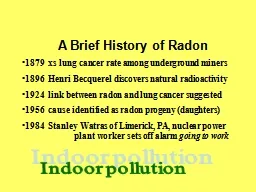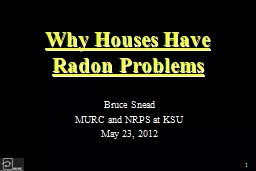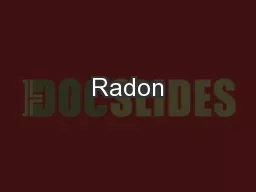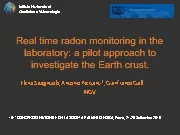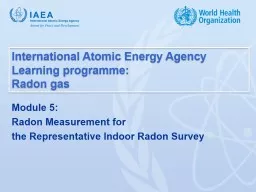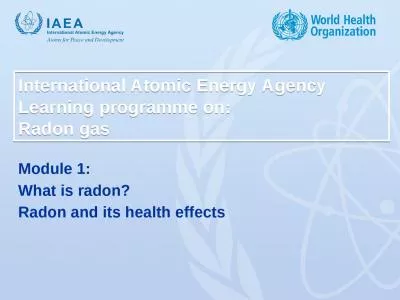PPT-A Brief History of Radon
Author : calandra-battersby | Published Date : 2016-06-26
Indoor pollution 1879 xs lung cancer rate among underground miners 1896 Henri Becquerel discovers natural radioactivity 1924 link between radon and lung cancer
Presentation Embed Code
Download Presentation
Download Presentation The PPT/PDF document "A Brief History of Radon" is the property of its rightful owner. Permission is granted to download and print the materials on this website for personal, non-commercial use only, and to display it on your personal computer provided you do not modify the materials and that you retain all copyright notices contained in the materials. By downloading content from our website, you accept the terms of this agreement.
A Brief History of Radon: Transcript
Download Rules Of Document
"A Brief History of Radon"The content belongs to its owner. You may download and print it for personal use, without modification, and keep all copyright notices. By downloading, you agree to these terms.
Related Documents

